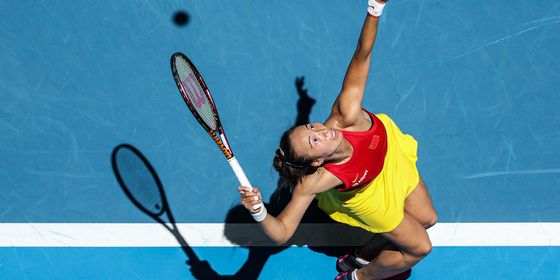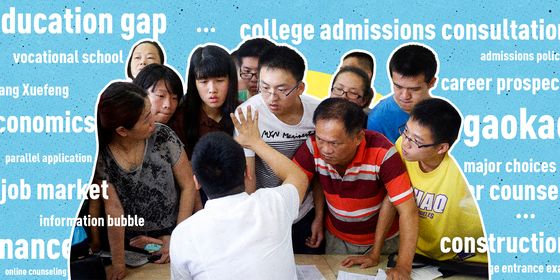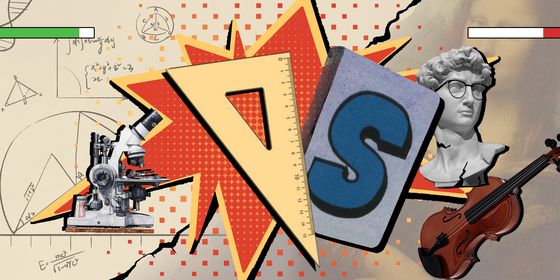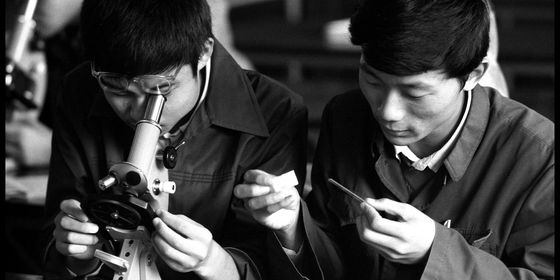Purple buttocks? Qipao-wearing? Anxious test-takers and parents have many rituals for the big day
For parents used to being hyper-involved in every stage of their offspring’s academic careers, the National Higher Entrance Examination can be three days of hopeless futility.
They’ve silenced all construction work and spent the past year (or three) making their kids give up all semblances of a social life. Now, with their prodigies shut inside the testing center, the only thing for them to do is claw at the chain-link fence, glare at passing cars, and imagine the worst.
In theory.
Where human assistance fails, supernatural assistance is always an alternative. You’ve probably seen the red charms that parents and test-takers have hung in Confucius temples and outside testing centers around the country to pray for a good result, but that’s totally passé. Maybe it’s all that free time, but over the years, anxious parents waiting outside the testing center have come up with an ever-evolving list of superstitious rituals they and their offspring can perform in daily life before, during, or after the day’s exam activities to ensure all goes well.
It’s not exactly clear when these superstitions started, but this year, they’ve caused the bemusement of the nice folks at Xinhua, which in turn prompted several Chinese media to publish helpful summaries of these guidelines:
Look good, be good
On June 7, the first day of gaokao, Xinhua photographed a long line of mothers standing outside Shenyang Railway Experimental Secondary School in dazzling qipao. Parents told reporters that a post of unknown origin that has been making its way through social media, whispering to them the homonymous sartorial rules for exam success.
Here’s our translation of the post, found on Weibo:
On the first day of gaokao [students] ought to wear red and green, signalling “red door-opening” [expression usually applied to new businesses, meaning success as soon as one opens their door] and “green light the whole way through.” On the second day, [students should] wear gray [灰 huī] and yellow [黄 huáng], indicating “destined for glory [辉煌 huīhuáng].” Mothers dropping off the exam-taker must wear qipao [旗袍 qípáo], as it indicates “success as soon as the flag [旗 qí] is raised [i.e. as soon as the battle starts].” Fathers dropping off the exam-taker must wear magua [马褂 mǎguà, a Qing-era vest-like tunic], indicating “success immediately upon the arrival of the warhorse [马 mǎ].”*
*The last two expressions are typically used as a pair
Other rituals for the exam-taker, according to this list published on Baidu’s blogging platform Baijiahao, includes wearing purple underwear. This is due to the expression 紫腚赢 (zǐ dìng yíng), literally “purple buttocks win,” a homonym of 指定赢 (zhǐdìng yíng, a certain win). It’s also considered good luck to wear clothes with the Nike logo, as the big checkmark means you’ll get all the answers right. By extension, you should not wear any logos that have a big “X” in it.
You are what you eat
Though several TWOC staff, who took the gaokao in the first decade of the 2000s, say that all they did on the morning of gaokao was eat a fried dough stick and two eggs, signifying a score of 100, the culinary rituals to ensure gaokao success have gotten more sophisticated since then.
One newer tradition is for the parents to cook a carp for the test-taker on the evening before or morning of the first day. According to ancient legend, if a carp can jump over the waterfall at Longmen [龙门, “Dragon Gate”] Valley on the Yellow River, it will become a dragon. Thus, carp are considered auspicious to consume before you undertake any kind of struggle in the hope of glorious achievement. The test-taker is supposed to take a bite each from the head, body, and tail parts. We’ve not been able to discover why this is the case.
There are also parents that make their kids eat rice cakes (糕点, gāodiǎn) and zongzi (粽子 zòngzi), which together are a homonym for 高中 (gāozhòng). This is presumably not 高中 (gāozhōng, note the different tones) as in “secondary school,” which the kids are now done with, but separate characters meaning “high” and “achievement.”
Strength in numbers
In Zhengzhou, Henan, volunteers commissioned two public buses park outside the Zhengzhou No. 1 Secondary School test center and serve as rest areas for waiting parents. The regular bus numbers are replaced with “211” and “985,” the designation used by the Ministry of Education for China’s first-tier universities, so parents can feel like they’re helping out in a spiritual sense by coming in to rest.
You’ve been told that 8 is a lucky number in China, but not so during the gaokao season. There’s an expression in Chinese, 七上八下 (qī shàng bā xià), which means having an anxious and confused state of mind, but also literally means “seven up eight down.” In this case, some parents go for the literal meaning: When booking a hotel room near the test center, they want rooms that end in 7, and avoid rooms that end in 8. Of course, it goes without saying that in booking hotel rooms or any other activity in the lead-up to gaokao, parents want to avoid the usual unlucky numbers, Chinese or not—4, 13.
Inside the test center
Superstition doesn’t just end at the gates once the test-taker has been dropped off. There’s a saying that when the test-taker receives the exam paper, they have to kiss (吻, wěn) it, to make sure they’ll pass the test smoothly (稳, wěn).
There’s also a superstition that if you enter the test center from the right and exit from the left (available entrances and exits permitting), it would make things 左右逢源 (zuǒ yóu fēng yuan, “all goes smoothly on the left and right”). Do the opposite, and it’s 左右为难 (zuǒ yóu wēinán, “difficulty on both left and right”). This is supposedly due to ancient beliefs about the auspiciousness of the right side.
Cover image from dgtle.com












